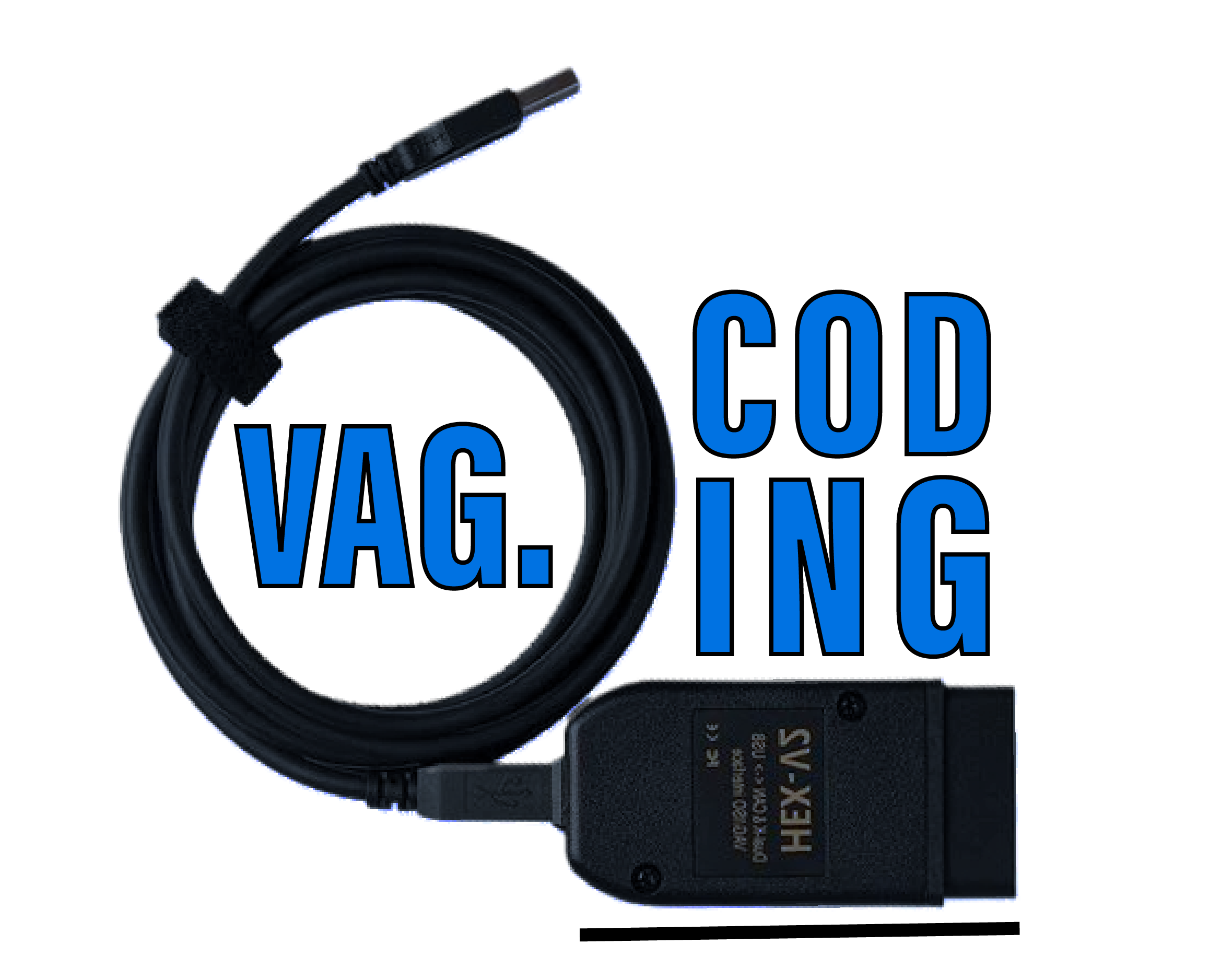
Purpose: to lower the air suspension for a lowered style.
Select“Auto” mode via the MMI (it must not be set to Dynamic, Comfort, etc.). Make sure the car is on level ground. Close the doors. If the doors open during this operation, the procedure will be interrupted. Make sure the car is not in towing or tire-change mode. Eventually set the car to“Neutral” and release the handbrake (remember, you’re supposed to be on level ground, so your A6/S6, A7/S7 C7/4G, A8 D4 won’t move).
Procedure:
1 – Engine off, ignition off, connect your official VAG-COM VCDS cable to the computer, then plug the other end into your vehicle’s diagnostics socket.
2 – Switch on the ignition, then run the VCDS program.
Line 1:
3 – Click on ” Select”, then click on ” Select ” and run the VCDS program. 34 – Level Control” .
4 – Click on“Security Access – 16” then enter the code“20103”.
5 – Click on“Adaptation – 10”, take note of the 4 values entitled as :
“Body height, stops front wheel shell G”.
“Body height, rear wheel shell G”stop
“Body height, stops front wheel shell D”.
“Body height, rear wheel shell stop D”.
6 – Take the values you noted above, and add the desired dimensions in millimetres (mm) to each value, noting them down carefully on a sheet of paper…
Example of a 15mm front and 11mm rear lowering:
- Front Left: 392.80 -> 407.80
- Front right: 388.40 -> 403.40
- Rear left: 391.30 -> 402.30
- Right rear: 385.60 -> 396.60
Be aware that Audi has a lowering tolerance of 17mm at the front and 13 at the rear, from what I understand. You can go lower if you like, but if you lower it a bit more, it will affect other parts of the system, such as the cameras, adaptive speed, etc., so be careful.
7 – Press “RETURN” Then go to“04 – Basic settings”
IMPORTANT: Whatever you do, do not select“Reset all adaptations”, as this will not work, and will require a visit to the dealer.
8 – Select“Activate trim”, click“Go!”, wait for it to finish (should only take a second or 2, until it says “Not active”) and then press “Stop”.
9 – Select“Erase trim calibration”, click on“Go!”, wait for it to finish, you’ll see an error message in the central display (ODB) of your meters indicating “Air Suspension Dysfunction ” with its little yellow car logo (drawings) with a two-way arrow in the center of the car (drawing), don’t worry this is normal, you’ll see in the VCDS writing “Not active” and then press “Stop”.
10 – Select“Approach reference level“, click on“Go! This step will take about a minute, and your car will rise and fall during the process (you’ll hear whistling). Wait until it finishes, until it says “Not active” and then press ” Stop “, then ” End, Back “.
11 – Go to“10 – Adaptation” on the previous screen.
12 – Next, you’ll need to enter the new values you’ve defined with the help of step 4 on your documents for the different heights.
“Body height, stops front wheel shell G”.
“Body height, rear wheel shell G”stop
“Body height, stops front wheel shell D”.
“Body height, rear wheel shell stop D”.
Select them, one after the other, to enter the new value you’ve determined, and click on“Save”, then repeat the operation for the other three wheel heights.
Each time you enter a value, you should get a message indicating that it has been accepted.
13 – When you have completed the changes for all 4 wheels, select“Back”, and return to“04 – Basic settings” again.
14 – In the basic settings, select“Calibrate trim” and press“Go! Wait for “Not active”) and then press ” Stop “.
If you get an error in this step, either you’ve missed a step described above, or something has gone wrong.
15 – Select“Activate trim”, click on“Go!”, wait a few seconds until it says “Not active” and then press “Stop”, then “End, Return”.
16 – Once you’ve finished, go to“02 – Fault codes” and clear the error codes.
Get out of the car and observe, wait a moment, and it will lower itself as you wished!
If you’d like to make another adaptation, forget all about the changes you’ve made previously, as they don‘t add to the previous ones, and cancel them out completely.
For example, you lowered the first time by 5mm on the value 392.80, refer to step 2 of this tutorial and repeat the various steps.
This brings your total to 397.80. You want a total reduction of 15mm. You’ll then enter 407.80 the second time, and lower it by a further 10mm on the second modification, bringing you to a total of 5+10=15mm.
I remind you that a “visible” and yet fairly safe lowering value is 17mm at the front and 13mm at the rear, at most. We strongly advise against going any lower.
